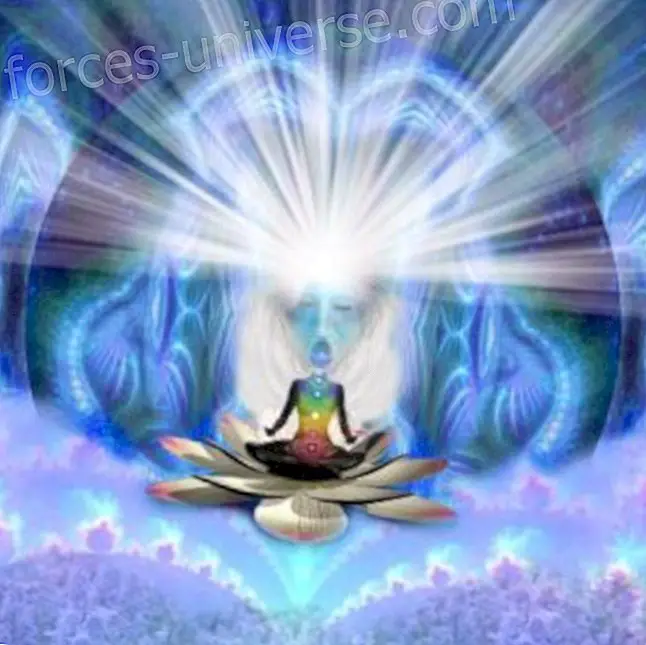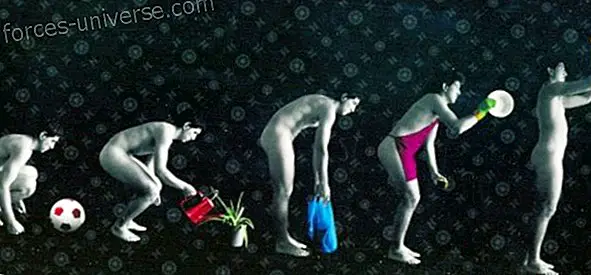
Even for the agnostic, the story of the Divine Incarnation must be one of the most fascinating legends that the past has bequeathed us. Although normally accepted as a Christian story, it is one of the oldest myths of the human race, so rooted in the foundations of thought that no mere intellectual skepticism can eliminate it. Because reason acts only on the surface of the mind, and no matter how rational an individual is created, when he sleeps, thoughts he believed to have overcome arise unconsciously. In their dreams the ancient myths will appear again, demonstrating that there is a region of the soul of which nothing knows and over which it has no control. The power of the Catholic Church lies precisely in the fact that, more than any other Western creed, it treasures those myths and symbols that stir the depths of thought and feeling. Scientific rationalism may alter the surface, perhaps cover the spirit with different clothing, or make it play another role. But the result is only to pretend, pretend, pure theater, against which the inner being rebels, which causes those serious mental conflicts that alienate man from life.
However, the Church often proves to be inadequate to cure the spiritual ailment of the modern individual because he finds it impossible to believe in her exclusive interpretation of the ancient symbols. For those who are able to believe, the Church is satisfactory, not so much in its interpretation as in the symbols themselves. Whatever we read in them, they seem to hold a power in themselves that no misunderstanding is capable of destroying. Thus, the fallacy of modern skepticism is that in rejecting the doctrines of the Church it has also rejected its symbols, and therefore, if the expression is not too hard, it has thrown the baby along with the bath water. However, this image of the baby is especially appropriate, because perhaps the most important of these symbols is related to the baby, with the Sacred Child " conceived of the Holy Spirit and born of the Virgin Mary ."
The Church has been called attention to the inconvenience of the fact that this same story is present in other religions of more ancient times, such as the legend of Maya and Buddha, and that of Isis and Horus.
To explain it, learned parents have resorted to poor answers, appealing to the ex-machina demon, the devil, and suggesting that he introduced history into other religions to confuse the believer. Or they even imply, on the other hand, that the grace of God transferred a portion of the Ultimate Truth to the infidels so that they were prepared for Christian revelation, a suggestion at the same time superficial and in greater depth than their authors intended. Since it creates the delicate and dangerous precedent that the grace of God has been imparted by means other than those of the Church, and seems as much a preparation for the conversion of the infidel as to the skepticism of science. And if the argument were to reach its logical conclusion, it would lead to the difficult question of the identity of God and the devil, since one is a source of grace and the other a temptation. But before discussing the essential meaning of the Incarnation, it is interesting to highlight some important and suggestive correspondences.
In the third chapter of the Gospel according to Saint John, it is said that Jesus affirms that in order for a man to enter the kingdom of God, he must be born again of Water and the Spirit. Furthermore, in the first chapter of Genesis, it is said that before the creation of the world the Spirit went to the surface of the waters. Therefore, it seems that these two elements, water and the Spirit, are necessary for divine creation, be it the creation of the universe or that of the Son of God. Hence, it is interesting to ask whether these two elements were involved in the birth of that particular Son of God called Jesus Christ. Next, according to orthodox teachings, we find the Spirit, the Holy Spirit. The close resemblance between Maria and Mare, the Latin name of " sea " (Mary is the Greek form), cannot be totally casual, while other significant words derived from the same Sanskrit root ma— are Maya (the mother of Buddha, who it also means the world of form, of the phenomenal), mater (mother) and the term "matter." In all ancient cosmologies, water is a symbol of matter, which, in union with the Spirit, produces the world of form. And while the Spirit is active and masculine, the water is passive and feminine. Hence, figuratively, water is the mother of the world, and we can deduce that the history of the Incarnation may have many equally authentic meanings.
In the plane of cosmogony, it represents the birth of the world as a result of the union of the Spirit with virgin matter, the sowing of the seed of life in an uncultivated soil. But its most important meaning is that referring to the spiritual development of the human being, to the idea of the Second Birth, to realize that, through this new birth, the unrepentant being can become Christ, Son of God and Son of Man Ignorance and spiritual darkness is the result of being immersed in dualism, it is a conflict between opposites, whether between the divine and the human, the self and the world or the conscious and the unconscious. This is the condition in which almost every human being finds himself upon awakening to self-consciousness. There is an opposition between ourselves and the universe in which we live and the society to which we belong, since time and again we discover that the demands of life are in conflict with personal desires. That is why there is a tendency to take everything towards ourselves, to erect a fortress and to carry within its walls all the things of life that we desire in a special way. It is as if one were trying to select certain aspects of the character of his wife, children or relatives, separate them from everything else and keep them in unalterable isolation. Or how to try to persuade time to always be pleasant and warm, or better yet, how to take a human body and separate the beautiful parts of the ugly ones, with the result that both die. Since this separation, this isolation from the self in relation to life, can only produce misery and spiritual death. Separated from life, the self has no meaning, it is like a lonely note taken from a symphony, as dead as a severed finger, as stagnant as a gust of wind trapped in a room n. The same can be said of any person, idea, object or quality that the self tries to hold and maintain as its exclusive property. On the other hand, the opposite position is equally fruitless. If the self is completely flooded by the world or is completely absorbed in God or in the community, it is as useless as a body that is only a member, as muted as the sononete of a note. uninterrupted (or any conceivable note played in the middle of a big fuss), and as absurd as a photograph without any color or special shape.
But between those two opposites, the self and the universe, there may be a union, not a merger similar to that of water when mixed with wine, but a union similar to that of man with the woman, in which both opposites retain their individuality and, nevertheless, produce a fruit in the form of a child. It is often believed that the object of mysticism is to reveal the identity of all separate things, completely deny any type of individual existence and find the unique Reality, whose multiplicity of expressions is only the result of illusion. n.
But there is an ancient Buddhist saying that says: For those who know nothing about Buddhism, the mountains are mountains, the waters are waters and the trees are trees. When he has read the scriptures and understood his doctrine a little, the mountains are no longer mountains, the waters are water and the trees are trees. But when it has been fully illuminated, then the mountains are again mountains, the waters waters, and the trees trees. Since, before we can really appreciate the changing individuality of things, we must, in a sense, realize their unreality. That is, it should be understood that not only oneself, but all other things in the universe are meaningless and dead if they are considered in themselves as permanent, isolated and self-sufficient entities. Unless it is related to the whole, the part has no value and the union from which the Divine Son is born is precisely this relationship of the part with the whole or, rather, this understanding of an existing relationship.
Just as the husband must, if he really loves his wife, receive and accept her fully at the same time that he gives himself completely to her, the human being must accept the world and surrender to him. To receive the universe in oneself, in the manner of some " mystics ", is simply to boast about the idea that one is God, creating a new opposition between the great whole and the degraded part.
To give oneself fully and unconditionally to the world is to become a spiritual non-entity, a mechanism, a shell, a leaf carried by the winds of circumstance. But if at the same time the world is received and the self is abandoned, then that union that originates the Second Birth prevails.
Only in this state is it possible to appreciate life in its real sense, to accept with love, gratitude and reverence what is pleasant in other creatures and what is not, knowing that joy is inseparable from suffering, the life of death, The pleasure of pain. Moreover, pain and death are not accepted simply because their counterpart produces life and pleasure, but because they are an integral part of the Supreme Life and the Supreme Pleasure. The Supreme Life is more than life that opposes death, just as a melody is more than a sound; It is the rhythmic presence and absence of sound in which the silence and disappearance of the notes are as important as the music itself. It is not just a matter of tolerating the pause for the love of the note, unless we also say that the note is tolerated for the love of the pause. Since an eternity of sound is as frightening as an eternity of silence, and an eternity of life is as horrible as an eternity of death.
But in things there is an alternation, a rhythm, a variety, as if they were a universal symphony. And this symphony is the Son of the Father, Sound, and of the Mother, Silence.
Thus, when we say that from the union of the self and life (or the world) Christ is born, we want to imply that the human being rises to a new center of consciousness in which it is not only him, nor only the world . On the contrary, it focuses on the harmony resulting from that giving and receiving from one to another. In reality, this center already existed, whether or not it was known, since two opposites cannot exist unless there is a relationship between them. And this relationship, the Son, is the Meaning, or what Keyserling calls transcendence, and what the Chinese term Tao designates, just as the son gives a meaning, a reason for being, to the two opposites, to man and the woman.
In this sense, the son is really " a father to the human being " and Christ a unity with the Father. Because what is mere substance, mere energy, mere everything, mere part, mere world, mere me? Taken separately they are nothing more than an instrument, a tool, an inanimate portion that the Tao gathers and shapes according to its own meaning; in reality, without that meaning they could not exist. As for the meaning in itself, it cannot be described, it can only be experienced, and it can only be experienced when there is that special kind of love between oneself and the world, which makes this union represent much more than any of them separately, in the same way that for husband and wife the son is more important than themselves.

AUTHOR: Eva Villa, editor in the big family hermandadblanca.org
SOURCE: “ Become what you are ” by Allan Watt






